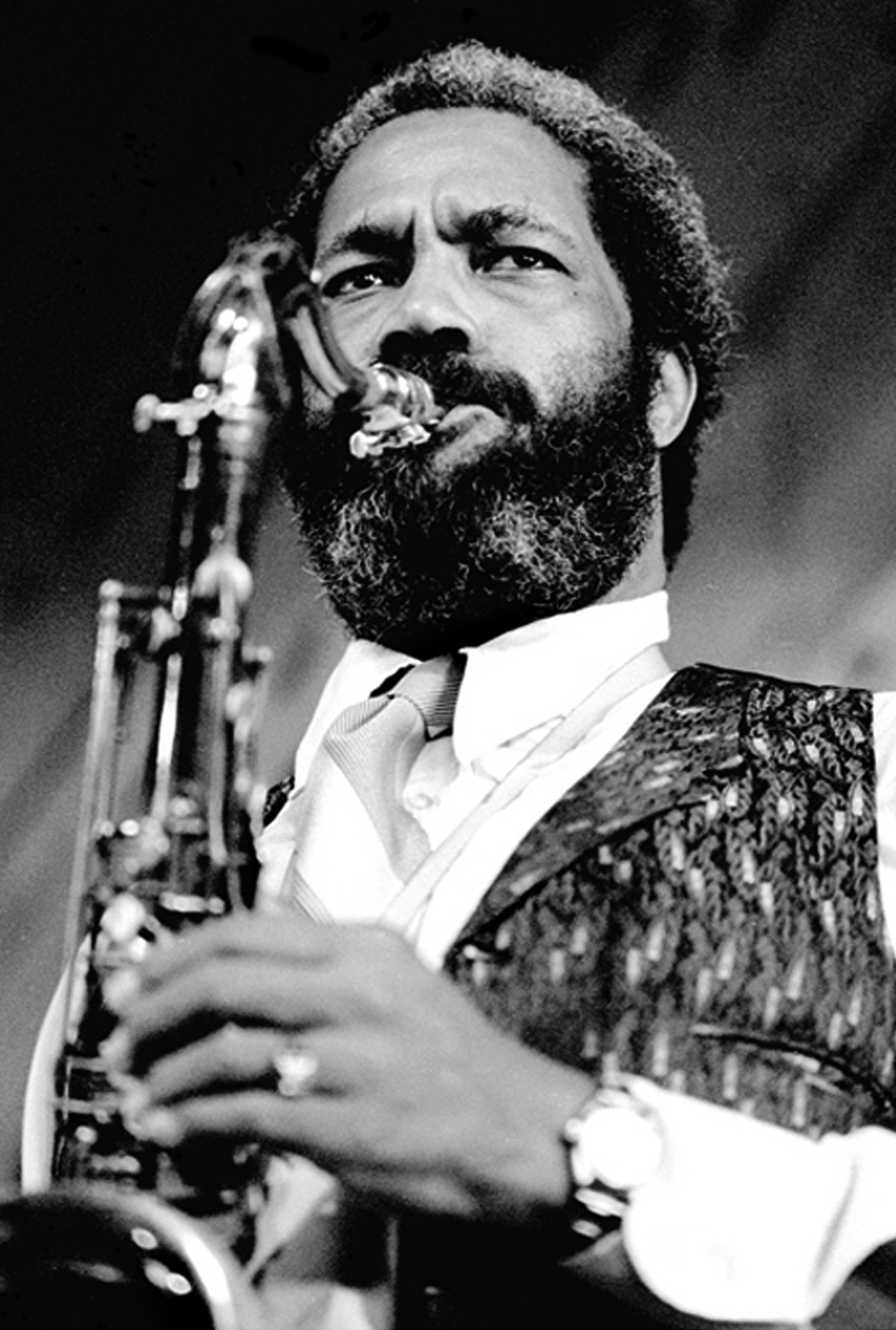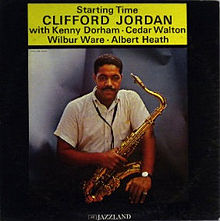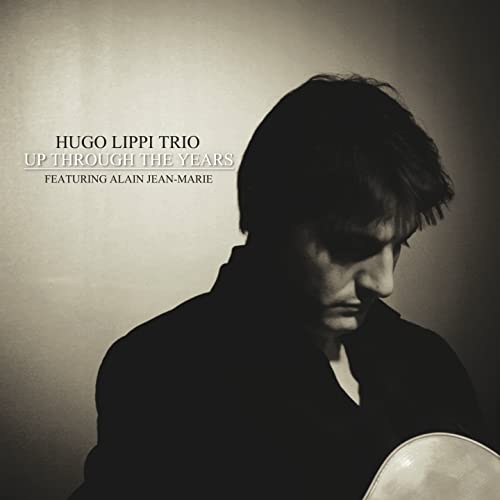Down Through The Years – Clifford Jordan
Simplicity, purity, and clarity are essential elements of this unique Clifford Jordan gem. Once you are comfortable soloing on the form (16-16-5-8), you'll definitely want to add this one to your repertory.
- Recording: Clifford Jordan - Starting Time
- Recorded on: June 16, 1961
- Label: Jazzland (JLP 52)
- Concert Key: C
- Vocal Range: , to
- Style: Swing (medium)
- Trumpet - Kenny Dorham
- Tenor Sax - Clifford Jordan
- Piano - Cedar Walton
- Bass - Wilbur Ware
- Drums - Tootie Heath
0:00
0:00
Buy MP3
Purchase Down Through The Years - Clifford Jordan
Purchasing this song through our affiliate links with certain retailers provides jazzleadsheets.com with additional support to help keep us bringing you the best lead sheets available. Thank you!
- Description
- Historical Notes
- Solos
- Piano Corner
- Bass Corner
- Drum Corner
- Guitar Corner
- Inside & Beyond
- Minus You
Delicate yet solemn, Down Through The Years is a unique and beautiful composition. It's a medium-tempo song that feels like a ballad; though broken up with a few swinging rhythmic figures, this song is driven by its simple, hymn-like melody. The melody and the smoothly flowing changes give this song a considerable warmth and depth.
The form is unusual: 45-measure AABC with 16-measure A sections, 5-measure B, and 8-measure C. There is a break and a couple of rhythmic hits at the end of the A section; the C section has longer notes in the melody over rhythm section pedal figures. For the rest of the song, as written on our lead sheets, the bass plays off the harmonic rhythm; in other words, the bass notes are half and whole notes that correspond with the chord changes.
The out head does not go to C. Instead, the last measure of B leads to a rubato melody phrase with an unusual final resolution: A♭maj7 to Cmaj7.
Our audio clip begins with the second time through the A section.
Don Sickler: "The way to perform and solo on this composition, for me, is for the bass to play (or play off of) the harmonic rhythm of the composition with the drums playing a light 4-feel on brushes. I also like to keep the 2-beat break to start the 15th measure of each A section. (This is the solo format of the original recording.) Clifford originally recorded it at ca. 112. Other artists have recorded it faster, and going right into a 4-feel for soloing.
"I love its delicate quality, and I love Tardo Hammer's tempo in his video (ca. 108) [See above.] At this slower tempo, he even effectively explores the four eighth-notes in the melody (in the 8th, 12th, and 13th measures) as light "swing" 8ths. Clifford Jordan and Kenny Dorham kept these eighths even. The purity, simplicity and clarity in Clifford and KD's performance is unique."
The form is unusual: 45-measure AABC with 16-measure A sections, 5-measure B, and 8-measure C. There is a break and a couple of rhythmic hits at the end of the A section; the C section has longer notes in the melody over rhythm section pedal figures. For the rest of the song, as written on our lead sheets, the bass plays off the harmonic rhythm; in other words, the bass notes are half and whole notes that correspond with the chord changes.
The out head does not go to C. Instead, the last measure of B leads to a rubato melody phrase with an unusual final resolution: A♭maj7 to Cmaj7.
Our audio clip begins with the second time through the A section.
Don Sickler: "The way to perform and solo on this composition, for me, is for the bass to play (or play off of) the harmonic rhythm of the composition with the drums playing a light 4-feel on brushes. I also like to keep the 2-beat break to start the 15th measure of each A section. (This is the solo format of the original recording.) Clifford originally recorded it at ca. 112. Other artists have recorded it faster, and going right into a 4-feel for soloing.
"I love its delicate quality, and I love Tardo Hammer's tempo in his video (ca. 108) [See above.] At this slower tempo, he even effectively explores the four eighth-notes in the melody (in the 8th, 12th, and 13th measures) as light "swing" 8ths. Clifford Jordan and Kenny Dorham kept these eighths even. The purity, simplicity and clarity in Clifford and KD's performance is unique."
For another song from this album, check out Kenny Dorham's Windmill. "Starting Time" was Clifford Jordan's fifth album as the sole leader, and the second of his three for the Jazzland label. Clifford also recorded Down Through The Years with his big band, on both a studio album, "Play What You Feel" from 1990, and a live album also titled "Down Through The Years" in 1991.
While the original recording of this beautiful Clifford Jordan composition did not feature a guitarist, it has since been played by guitarists Marvin Sewell and Hugo Lippi. On Yoron Israel's album "Chicago," Sewell plays a more understated role, playing the melody on the B sections and contributing some light comping. On his own record "Up Through The Years," Lippi takes center stage, playing the melody throughout and blowing for a chorus.
Guitarist Bruce Acosta took this tune, with its simple melody and thoughtful changes, in another direction, arranging it for chord melody. While much of this arrangement features familiar four note voicings, connecting them smoothly and playing the melody clearly is a formidable challenge.
This is a great solo piece for intermediate guitarists to develop their technique and sense for chord melodies and for advanced guitarists to expand their repertoire.
Guitarist Bruce Acosta took this tune, with its simple melody and thoughtful changes, in another direction, arranging it for chord melody. While much of this arrangement features familiar four note voicings, connecting them smoothly and playing the melody clearly is a formidable challenge.
This is a great solo piece for intermediate guitarists to develop their technique and sense for chord melodies and for advanced guitarists to expand their repertoire.
Related Songs
Email Send Down Through The Years to a friend
Send this page to a friend via email. Add your name or email in the first field. In the second, add one or more email addresses, separated by a comma.
- Recording: Yoron Israel - Chicago
- Recorded on: August 12, 1998
- Label: Double-Time (DTR 145)
- Concert Key: C
- Vocal Range: , to
- Style: Swing (medium)
- Tenor Sax - Joe Lovano
- Guitar - Marvin Sewell
- Organ - Larry Goldings
- Drums - Yoron Israel
Video
- Description
- Historical Notes
- Solos
- Piano Corner
- Bass Corner
- Drum Corner
- Guitar Corner
- Inside & Beyond
- Minus You
A bit faster than the original recording, Yoron Israel's version of Down Through The Years is also more obviously swinging, with a 2-feel in the organ. A break is added in the 8th measure of the A section. The C section pedal figures are used as an intro, and in the head the last note of the C section melody is G instead of D. Solos go to a 4-feel except for the pedal figures at C. The ending is the same as on the original recording.
The audio clip starts on the second time through the melody.
The audio clip starts on the second time through the melody.
"Chicago" is Yoron Israel's third album as a leader, and his first to feature an organ/guitar/drums rhythm section. His next album, "Basic Traneing," also features an organ trio rhythm section as well as tenor saxophonist Bill Pierce. "Chicago" is Israel's only album so far with either Larry Goldings or Marvin Sewell.
Guitarist Marvin Sewell plays some of the melody, both by himself and in unison with tenor saxophonist Joe Lovano. Sewell doubles Lovano's melody from the pickup to the 7th measure through the 9th measure, and from the pickup to the 13th measure through the 14th measure. He then plays the melody alone in the B section, and the C section again features unison guitar and tenor. In the out head B is also unison. Between the guitar melody passages in the A section, Sewell contributes some light comping under the tenor melody.
Guitarist Bruce Acosta took this composition, with its simple melody and thoughtful changes, in another direction, arranging it for chord melody. While much of this arrangement features familiar four note voicings, connecting them smoothly and playing the melody clearly is a formidable challenge. This is a great solo piece for intermediate guitarists to develop their technique and sense for chord melodies and for advanced guitarists to expand their repertoire.
Guitarist Bruce Acosta took this composition, with its simple melody and thoughtful changes, in another direction, arranging it for chord melody. While much of this arrangement features familiar four note voicings, connecting them smoothly and playing the melody clearly is a formidable challenge. This is a great solo piece for intermediate guitarists to develop their technique and sense for chord melodies and for advanced guitarists to expand their repertoire.
Related Songs
Email Send Down Through The Years to a friend
Send this page to a friend via email. Add your name or email in the first field. In the second, add one or more email addresses, separated by a comma.
- Recording: John Marshall - Live At "Le Pirate"
- Recorded on: May 11-12, 2007
- Label: Organic Music (ORGM 9750)
- Concert Key: C
- Vocal Range: , to
- Style: Swing (medium)
- Trumpet - John Marshall
- Tenor Sax - Grant Stewart
- Piano - Tardo Hammer
- Bass - John Goldsby
- Drums - Mark Taylor
- Description
- Historical Notes
- Solos
- Piano Corner
- Bass Corner
- Drum Corner
- Guitar Corner
- Inside & Beyond
- Minus You
Though even faster than Yoron Israel's recording, John Marshall's version is closer to Clifford Jordan's, with the same two-horn arrangement. The main difference is in the drums: the A and B sections feature a swinging 2-feel on the hi-hat, and the C section adds a 12/8 Latin groove. The bass plays off the harmonic rhythm on the A sections but switches to 2-feel at B.
As with the Yoron Israel version, solos go straight to 4-feel; the 12/8 groove at C is also used in the solos except in John Marshall's first chorus. The ending differs from the original by adding D♭maj7 on the second half of the second to last measure.
Again, our clip starts on the second time through the melody.
As with the Yoron Israel version, solos go straight to 4-feel; the 12/8 groove at C is also used in the solos except in John Marshall's first chorus. The ending differs from the original by adding D♭maj7 on the second half of the second to last measure.
Again, our clip starts on the second time through the melody.
John Marshall recorded two studio albums with a lineup almost the same as on this live recording, but with Jimmy Wormworth on drums: "Frisky" in 2004, and "Waltz For Worms" in 2010.
A video is available on Youtube (see above) of Tardo Hammer, with Lee Hudson on bass and Steve Williams on drums, playing a very different version of Down Through The Years. This one is slower than Clifford Jordan's recording, with a ballad half-time feel. Tardo swings the eighth-note passages of the melody more than on the other recordings; this works quite tastefully in the ballad-esque setting. This version has the same ending chords as John Marshall's but without the melody.
A video is available on Youtube (see above) of Tardo Hammer, with Lee Hudson on bass and Steve Williams on drums, playing a very different version of Down Through The Years. This one is slower than Clifford Jordan's recording, with a ballad half-time feel. Tardo swings the eighth-note passages of the melody more than on the other recordings; this works quite tastefully in the ballad-esque setting. This version has the same ending chords as John Marshall's but without the melody.
Related Songs
Email Send Down Through The Years to a friend
Send this page to a friend via email. Add your name or email in the first field. In the second, add one or more email addresses, separated by a comma.
- Recording: Hugo Lippi - Up Through The Years
- Recorded on: November 18-19, 2013
- Label: Black And Blue (BB 792.2)
- Concert Key: C
- Vocal Range: , to
- Style: Swing (medium)
- Guitar - Hugo Lippi
- Piano - Alain Jean Marie
- Bass - Sylvain Romano
- Drums - Mourad Benhammou
Video
- Description
- Historical Notes
- Solos
- Piano Corner
- Bass Corner
- Drum Corner
- Guitar Corner
- Inside & Beyond
- Minus You
Guitarist Hugo Lippi's version is again different from the others, though it starts similar to the original recording. About the same tempo as Yoron Israel's version, this one also has a break in the eighth measure of the first A section. This first A has a similar feel to the original recording, but the second A goes to a 4-feel. The 4-feel continues into the B section but goes to a more broken-up 2-feel in the third measure. The ending is different from all other versions: the C section is played twice, slowing down in the final repeat of the pedal figure.
Hugo Lippi plays the B section melody slightly different from the other versions: the two notes in the second measure are C and B♭ instead of B♭ and G.
Our audio clip starts on the second statement of the melody.
Hugo Lippi plays the B section melody slightly different from the other versions: the two notes in the second measure are C and B♭ instead of B♭ and G.
Our audio clip starts on the second statement of the melody.
"Up Through The Years" is French guitarist Hugo Lippi's second album as a leader. Drummer Mourad Benhammou also played on Lippi's debut album, "Who Cares" from 2007, as well as alongside Lippi on four albums by trumpeter Fabien Mary.
This recording is a great opportunity to hear this song in a guitar melody setting. Hugo Lippi is featured front and center on the entire melody. He plays single note lines on the entire A sections but switches to Wes Montgomery-style octaves in the B and C sections. Lippi is a French guitarist featured on sixteen records with two albums out as a leader.
Guitarist Bruce Acosta took this composition, with its simple melody and thoughtful changes, in another direction, arranging it for chord melody. While much of this arrangement features familiar four note voicings, connecting them smoothly and playing the melody clearly is a formidable challenge. This is a great solo piece for intermediate guitarists to develop their technique and sense for chord melodies and for advanced guitarists to expand their repertoire.
Guitarist Bruce Acosta took this composition, with its simple melody and thoughtful changes, in another direction, arranging it for chord melody. While much of this arrangement features familiar four note voicings, connecting them smoothly and playing the melody clearly is a formidable challenge. This is a great solo piece for intermediate guitarists to develop their technique and sense for chord melodies and for advanced guitarists to expand their repertoire.
Related Songs
Email Send Down Through The Years to a friend
Send this page to a friend via email. Add your name or email in the first field. In the second, add one or more email addresses, separated by a comma.

Clifford Jordan
September 2, 1931 – March 27, 1993
One of the great tenor saxophone stylists of the hard bop scene, Clifford Jordan lent his unique sound and heartfelt soloing to a wide variety of bands and recordings for over 30 years. Read more...
There was a problem.
...






